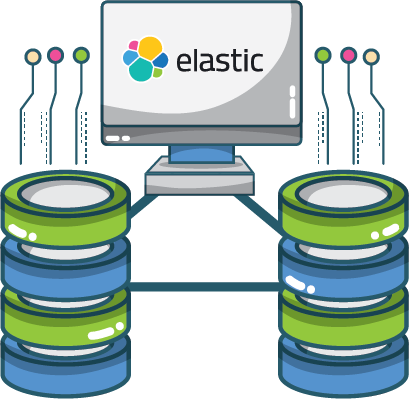Platform Engineering
Technologies often used by our team inVirtualization
VMware, Hyper-V, KVM, and Proxmox are popular virtualization platforms that enable running multiple virtual machines on a single physical host. They provide complete isolation between services.
Containerization
Docker, Kubernetes, Fargate, GKE, ECS, and LXC are popular containerization technologies that allow for efficient deployment, scaling, and management of applications and services in a virtualized environment.
Infrastructure as Code
Terraform, Ansible, CloudFormation, and GC Cloud Deployment are popular Infrastructure as Code (IaC) tools that allow for automated and repeatable provisioning of infrastructure resources.
Serverless computing
Serverless technologies allow for building and running applications and services without the need for managing and maintaining underlying infrastructure, resulting in increased scalability and reduced costs..
STEP 01 OpenShift
Building WordPress Platform
- Set up a cluster of OpenShift nodes and configure the environment
- Deploy WordPress as a container in OpenShift using an existing image from a repository.
- The PVC created as part of the WordPress deployment and bound to the PV
- Configure the WordPress application to use the PVC for storing the database and user-uploaded media files
- Automate deployment and scaling using templates, Jenkins, Ansible, DeploymentConfigs
- Monitor and manage the platform, includig backup and recovery to ensure that the platform can be quickly restored in the event of a disaster
- Security measures to protect the platform from threats, including securing the network, controlling access, and implementing encryption


STEP 02 Amazon Web Services
Building WordPress Platform
- Setup necessary AWS services i.e., Amazon Elastic Compute Cloud (EC2), Amazon Relational Database Service (RDS), and Amazon Elastic File System (EFS).
- Use Amazon EFS for use by multiple EC2 instances to store the WordPress data and media files.
- Create Amazon RDS to store WordPress database for making it scalable, highly available, and for auto back up.
- Launch EC2 instances to run the WordPress application to run the WordPress containers and serve the application to users.
- Use AWS EKS to manage the containers running on the EC2 instances to automate the deployment, scaling, and management of the containers.
- Create separate namespaces for each user to isolate the resources used by each user.
- Auto-deploy WordPress, monitor, manage and secure the WordPress platform.
STEP 03 Apache Traffic Controller
Edge computing platform
- Setup EC2 instances in required regions and available in AWS for running Apache Traffic Controller software and process data from the edge devices
- Connect edge devices to edge computing nodes. The devices will send data to the nodes for processing.
- Configure ATC to process the data from the edge devices and send the processed data to the cloud for storage and analysis. Congigure The ATC to direct traffic to the nearest edge compute node to reduce latency.
- Create separate namespaces for each user to isolate the resources used by each user and prevent them from interfering with each other. Each namespace will be deployed in the closest edge compute node to the user to reduce latency.
- Deploy edge applications in each namespace to process the data from the edge devices.
- Monitor the performance and availability of the platform and configure alerts to notify of any issues
- Use VPCs, security groups, and network ACLs, to secure the edge compute nodes and the data processed by the platform.


STEP 04 ELK
DevOps Technologies
- Continuous Integration (CI) tools such as Jenkins, Travis CI, CircleCI
- Continuous Delivery (CD) tools such as Jenkins, Spinnaker, Deployment Pipeline.
- Infrastructure as Code (IaC) tools such as Terraform, CloudFormation, Ansible.
- Configuration Management tools such as Puppet, Chef, Ansible.
- Monitoring tools such as Nagios, Zabbix, Datadog.
- Log management tools such as ELK Stack, Graylog, LogDNA
- Containerization tools such as Docker, Kubernetes.
- Source Code Management (SCM) tools such as Git, Subversion, Mercurial.
- The ELK stack (Elasticsearch, Logstash, and Kibana) for centralizing, processing, and visualizing log data from multiple sources to facilitate efficient monitoring, troubleshooting, and analysis..
The team expertly configured a Kubernetes cluster and successfully validated Rails Platform application performance with a load test of 10,000 concurrent users.
The team expertly upgraded the .NET application and smoothly migrated the associated MSSQL data for an Aviation Authority, ensuring minimal downtime and strict compliance with the security audit report. This streamlined the operations with increased level of security.
The team accomplished the implementation of a state-of-the-art CDN utilizing Traffic Controller and MAAS with a billing and provisioning platform. The migration of all data from the previous CDN infrastructure to the new platform was executed efficiently.
The LAMP stack was optimized by utilizing AWS for auto-scaling and load balancing. The technology stack comprised of RDS and S3 bucket, resulting in decreased latency across regions. The deployment was smoothly managed with CodeDeploy and CodePipeline.
The team successfully completed a live migration of a vast amount of data in AWS Aurora by establishing a replication instance, directing traffic to the replica, and elevating it to the primary instance.
The team setup a tech stack using AWS Services (RDS, Lambda, ADX) for Laravel PHP APIs, Vue.js application. This included creating a VPC, deploying EC2 instances, S3 bucket, and utilizing CloudFront for improved performance and distribution and CloudWatch to monitor the infrastructure.
A seasoned team of Platform Engineers!
While APYL Teams develop and manage your idea, you scale your business to thr new heights.

